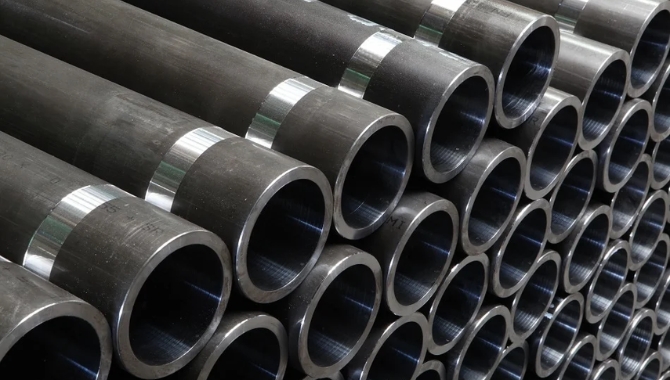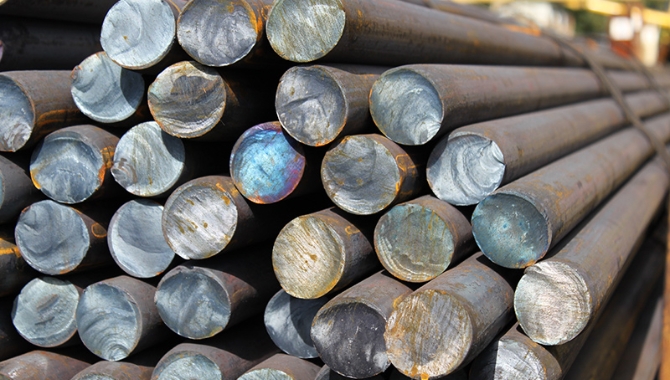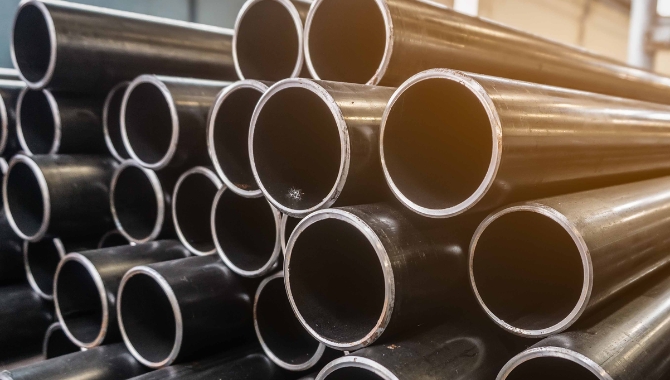Introduction to Carbon Steel
Carbon steel is one of the essential manufacturing materials because it provides a lot more benefits with minimum costs. It consists almost entirely of iron and carbon, which in varying amounts determine the properties and behavior. It usually does not have the elevated percentages of other elements like nickel or chromium that regular steels do contain. This simplicity significantly reduces cost and is well-known in many applications. Being a material with high strength, it has a variety of applications in construction and metalworking, automobiles.

Notable Characteristics of Carbon Steel
When carbon steel is used so extensively in manufacturing, it would be unthinkable to not have even a basic knowledge of the fundamental properties. These are the properties, which make carbon steel a perfect choice in many industries.
- High Tensile Strength: One of the key advantages that carbon steel offers is its excellent tensile strength. This means you can trust it to take a heavy load without bending. This is important if it will be structural because you should know that the material can support itself and projects long term stability so your project stay running.
- High Strength: One of the most known high strengths for carbon steel with a high level of carbon that indicates its hardness. The more carbon the harder it becomes. This makes it perfect for producing wear-resistant tools and machinery. This allows your gear to remain efficient even under harsh conditions.
- Weldability: When welding, carbon steel is generally well-adapted, especially low-carbon steels which are easy to weld. Low-carbon steel is the ideal choice if you are working on a project that requires lots of welding (which, due to its flexibility and reliability, can give better results). When the carbon content increases, however, weldability drops off significantly, so make grade selection decisions based on your specific application.
- Corrosion Resistance: While carbon steel offers high strength and hardness features, on the downside it has low corrosion resistance. However, you can extend the life of such a metal by maintenance and proper coating to prevent rust. More specifically, if some of your components are exposed to harsh conditions, then your product will stay tough and efficient for the years ahead.

Types of Carbon Steel & Their Applications
Not all carbon steel is created equal, though. Different types of carbon steel have been developed to cater to the needs of different industries. Hence, it is equally crucial to have remarks about these assortments so we can decide well at the right time.
- Low Carbon Steel: Low carbon steel below 0. 3 % carbon is a flexible material that can be easily welded. If your project is such that the materials used need to be easily worked upon or fabricated such as auto body parts or construction items this is the steel to go for. It is most beneficial when you desire both the tensile strength and the ease with which the material can be formed.
- Medium Carbon Steel: For an application that requires strength and elongation, medium carbon steel is the material to turn to. A mild steel has a carbon content of between 0. 3% to 0. 6% it is quite challenging for gears, axles and machinery parts. If your components need a balance between hardness and necessary wear resistance this grade would be perfect as it assures durability in aggressive conditions.
- High Carbon Steel: If hardness and strength are a priority, high carbon steel is what you want to use for your application. Containing more than 0. With 0.6% carbon, this material has great use for tool-building applications such as knife edges and high-tensile strength wires. When using it in production processes, you should consider that is not very weldable nor formability efficient.

Carbon Steel Manufacturing Process
When you own a manufacturing business, everything in your job depends on the quality of what goes into producing carbon steel when it comes to making products for other businesses. There are many steps, and each step contributes to the final properties of the material.
- Raw Material Processing: The journey starts with selecting and processing raw materials such as iron, coal or limestone We usually place those materials into a blast furnace to get melted and yield its iron which is mixed with carbon contents. This stage is the prerequisite of how to produce carbon steel that you want.
- Refining: The molten iron is refined after smelting to remove some impurities contained in the iron, such as sulfur and phosphorus They are crucial because they determine the actual quality of your steel and in terms of uniformity assist you in meeting the industrial demand between them.
- Alloying: Then, you’ll improve the quality of the refined iron via additional alloying by incorporating other components like manganese, and silicon, amongst others. The option of the alloying element and its concentrate depends on the properties that are required in the final product such as strength, hardness etc in your operations.
- Forming and Finishing: Last of all, the varied carbon steel forms it into the final required form of plates, sheets, bars or whatever shape is required, and then it undergoes heat treatment to get the required hardness and strength of steel. This final step provides an additional level of customization for the steel to perfectly fit your manufacturing processes.
Manufacturing Challenges with Carbon Steel
Their use is still associated with certain difficulties that, if faced, may affect your manufacturing processes. Here are the issues raised and the information that you need to have to address these challenges.
- Rust: Although it is a high strength, carbon steel rusts when exposed to moisture. One way to reduce rust in the metal is coating or alloying additions. Maintenance and inspection are also good practices to prolong the life of your parts, as well as assuring their performance for the applications where these elements are applied.
- Hardness Control: It is very difficult to reduce the hardness of carbon steel, especially if you are in a heat treatment process. A third thing you might want to take into account is the temperature and cooling rates, as your steel must not be too soft or tender. This leads to the appropriate management of these and helps in steel behaving as it is intended, meeting your fabrication needs.
- Difficulties In Processing: Carbon steel hardness indeed makes it difficult to machine because the tools get wore out faster and the machining time increases. Fight this by making sure you have the right cutting tools, as well as proper low-speed techniques and the use of lubricants. These measures will help you in making precise cuts and of course to prevent your tools from getting worn out.

FAQs About Carbon Steel
How Do I Pick the Correct Grade of Carbon Steel?
You will have to judge the requirements of your project and then select a grade for you. High carbon steel has the best strength and wear resistance, but low carbon works better for those projects with high weldability. Take those things into consideration before you make your selection.
Can Carbon Steel be Used Outdoors?
As an experienced yes you can use it outdoors but must be careful. Apply coatings or select corrosion-resistant grades to prevent rust. Regular maintenance helps ensure durability in outdoor settings.
What Are the Common Applications of Carbon Steel?
Construction, automotive parts and machinery are 3 larger uses of carbon steel. Its versatility and power make it ideal for a number of functions. It can be used for many industry works, from building materials to tools.
How to Maintain Carbon Steel Equipment?
Take care of your carbon steel equipment by inspecting it regularly and wearing protective coatings. Prevent from exposure to moisture and corrosive environments for a longer lifespan. Taking these steps will help ensure years of proper operation for your equipment.
Conclusion
Carbon steel is an excellent manufacturing material because it delivers strength, and versatility and comes at a cost-effective rate. When you are aware of its properties, types, and issues, you will make better choices that help optimize your operations and ensure resilience. Whether you are choosing between different grades of steel for your products or dealing with typical manufacturing problems, carbon steel is a terrific base to build on in the company.




